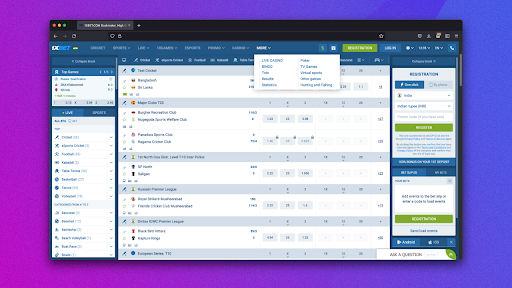
Table of Contents
Benefits of API Integration for Mobile App Development
These days, it’s hard to imagine life without our smartphones and the mobile apps we use. They enabled us to stay connected with the world, access information on the go, and have made our lives more productive. With the increasing demand for mobile applications, a new technology called API integration has emerged to help mobile app developers create better apps. This article will discuss the benefits of API integration for mobile app development.
But What is an API?
An API (Application Programming Interface) is a set of tools and protocols that allow developers to access and create a connection between two applications. API integration allows developers to access data and services from a remote server, eliminating the need to write code from scratch. This makes it easier and faster to develop applications, allowing developers to focus their time and energy on other aspects of the development process.
Application here stands for software that can perform functions, interface stands for the service agreement between the two apps, and it defines the connection between the two applications using requests and responses.
API integration works by allowing developers to make requests to a remote server and receive responses from the server. The API will then process the request and provide the necessary data or services requested by the developer.

Benefits of Mobile App API Integrations
They Save Time for Developers
API integrations allow developers to save time on coding, as they can access existing data and services from a remote server. This enables developers to focus on other aspects of the development process, such as improving the user experience and adding new features.
More Features, Less Coding
With API integrations, you get more with less effort. API integrations provide access to many features, such as payment processing, analytics, and data storage. This eliminates the need for developers to write code for these features from scratch, saving them time and effort. Moreover, developers can easily add new features and services to their applications by integrating existing APIs.

Easier Maintenance and Updating
API integrations make the maintenance and updating of applications easier. When new versions of APIs are released, developers can easily update their applications without having to rewrite the code from scratch. This also allows developers to quickly fix bugs in their applications and ensure they are always up-to-date.
Mobile API Integrations Make the App More Efficient
API integrations also make mobile applications more efficient. API integrations allow developers to access information faster and more reliably, reducing the time it takes to download and process data. This helps applications run more smoothly and efficiently, resulting in a better user experience. Additionally, API integrations also reduce the amount of data that needs to be stored on the device, which helps save space and improve the application’s performance.
An Overall Impressive User Experience
API integration also makes the user experience more impressive. Users can access a wide range of services from a single source with multiple API integrations in one app. This eliminates the need to open multiple apps to perform different tasks, making the user experience much more efficient. API integrations help users access data faster and more reliably, resulting in a smoother user experience.
Easier Payment Integrations

API integrations also make payment integrations easier. Developers can access and use existing payment APIs, such as Stripe and Square, to add payment options to their applications. This eliminates the need for developers to write code from scratch to integrate payment options, saving them time and effort. Developers can also easily add new payment options with API integration, making it easy to keep up with changing payment trends.
Examples of Popular Mobile App API Integrations
Google Mobile Apps APIs
When discussing API integrations, no better example comes to mind than Google APIs. They provide access to various services, including Google Maps, Google Drive, Google Photos, and Google Calendar. Developers can access and use these services with Google APIs to add features and services to their applications. Google APIs make developing robust and interactive applications simpler by providing access to a wealth of data, such as location data, analytics, and machine learning.
Twitter Bot
Twitter Bot is an API integration that allows developers to build bots on the Twitter platform. Developers can use the Twitter Bot API to add features such as automated responses, automated follow-up tweets, and automated retweets. With the Twitter Bot API, developers can create engaging applications that interact with users in real time. Not to mention that the Twitter Bot API provides access to valuable data, such as trending topics, user profiles, and analytics.
Weather API
Weather API is a type of API integration that we all use on our smart devices. The Weather API allows users to access weather data, such as temperature, precipitation, and wind speed, from different locations on a global scale. With the Weather API, developers can easily add features such as weather forecasts and current weather conditions to their applications. This makes it easier for users to stay up-to-date on the latest weather conditions and plan their activities accordingly.
E-Commerce apps
E-commerce applications are another type of mobile app that heavily relies on API integration. By integrating APIs such as Stripe, PayPal, and Square, developers can easily add payment options to their applications. This allows users to easily purchase items from within the app, making it a more convenient and enjoyable experience. Additionally, APIs, such as Amazon Marketplace and eBay, can be integrated to allow users to search for and purchase items from within the app.
Bot Integrations
Bots are also becoming increasingly popular as mobile app API Integrations. By integrating chatbot APIs such as Dialogflow and the Microsoft Bot Framework, developers can add conversational interfaces to their applications. This allows users to interact with the application in a natural language and enables developers to provide personalized experiences to users. Bots can also automate tasks, such as customer service and data collection, which helps streamline processes and improve the user experience.
The nandbox native no-code app builder has its own API/Bot ecosystem. It allows you to create a chatbot in your app with many features like an inline menu, message editing, and more. Try it now!






